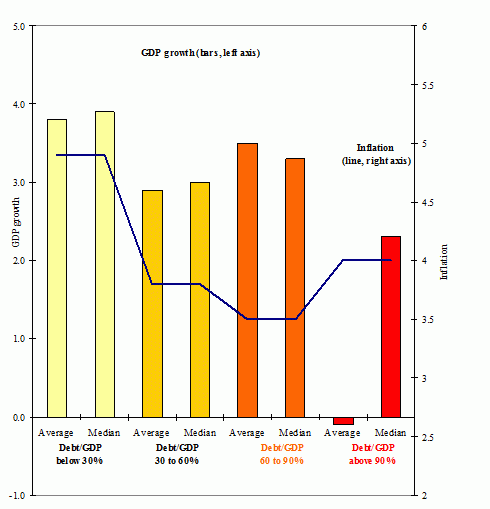What is the relationship between debt and growth rates?
In their recent book, This Time is Different: Eight Centuries of Financial Folly, Carmen Reinhart and INET advisory board member Kenneth Rogoff found that when government debt crosses the threshold of 90% of GDP, median growth rates fall by 1%, and average growth falls considerably more.
This finding has proven controversial, and a number of economists have questioned it. Indeed, in a recent report, the Economic Policy Institute has said that there is “severe doubt that there is a well-defined threshold above which public debt cannot rise without affecting growth, let alone a threshold precisely at 90 percent.”
Reinhart and Rogoff have since called the reaction to their strategy and results “somewhat muddled,” and have clarified their findings in a recent paper.
Here is a graph of the data they used (GDP growth versus debt levels,) which they claim can be interpreted to mean that there “is no obvious link between debt and growth until public debt exceeds the 90% threshold:

They also indicate that it is not enough to interpret single episodes (like the U.S. around World War II, or recently in Japan) as empirical evidence that the 90% threshold does not exist.
Reinhart and Rogoff’s findings are extremely significant to INET’s current Deficit Debate. Economist Richard Koo, in a recent testimony before the House Committee on Financial Services, while not addressing the question of a debt threshold, did call the G-20’s proposal to halve deficits by 2013 “ill-advised.”
Should governments be prudent with their deficits, taking care to avoid the 90% threshold? Or should they continue stimulus packages to ensure that private sectors are healthy enough to sustain themselves?
To read the entire paper by Reinhart and Rogoff, go here

